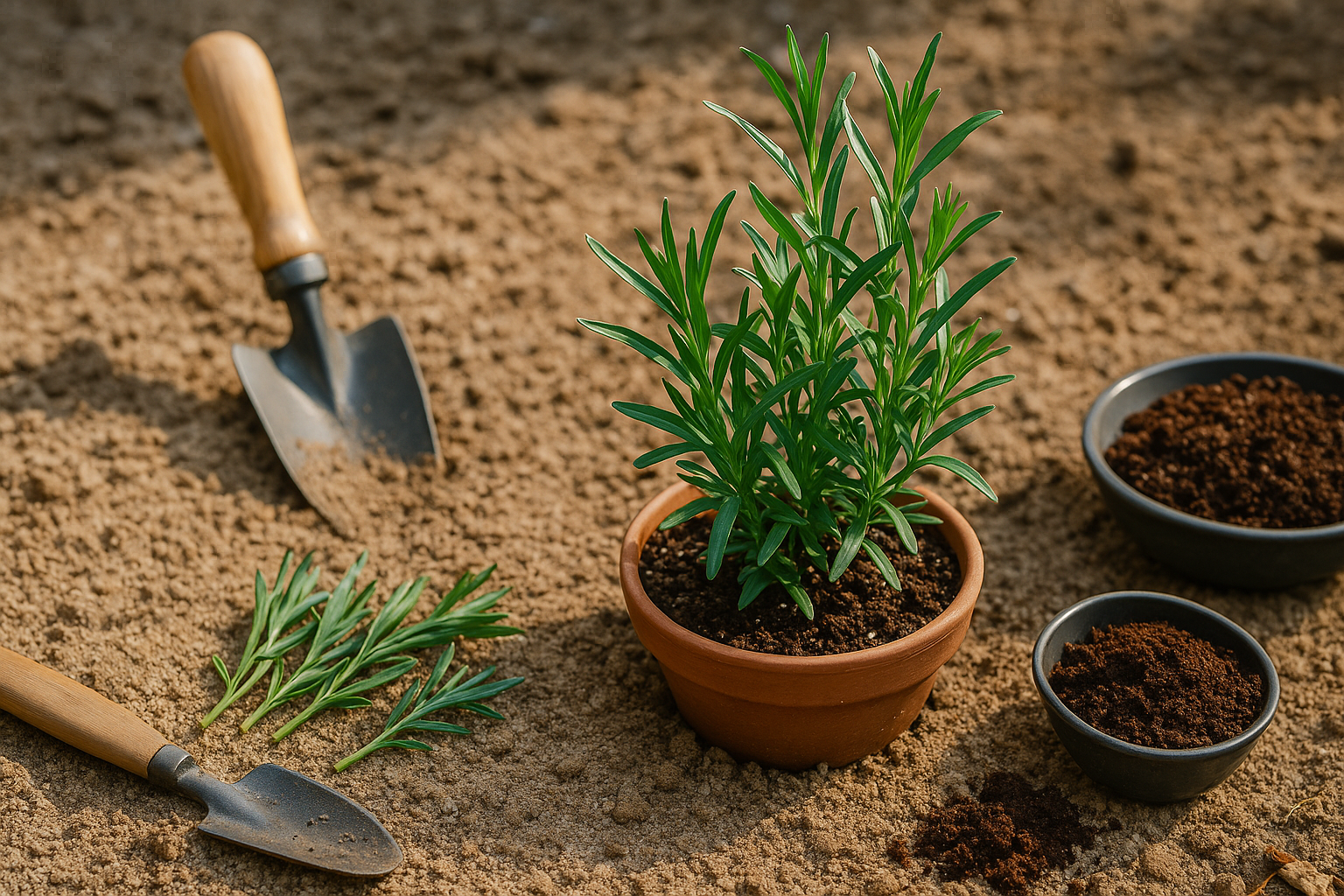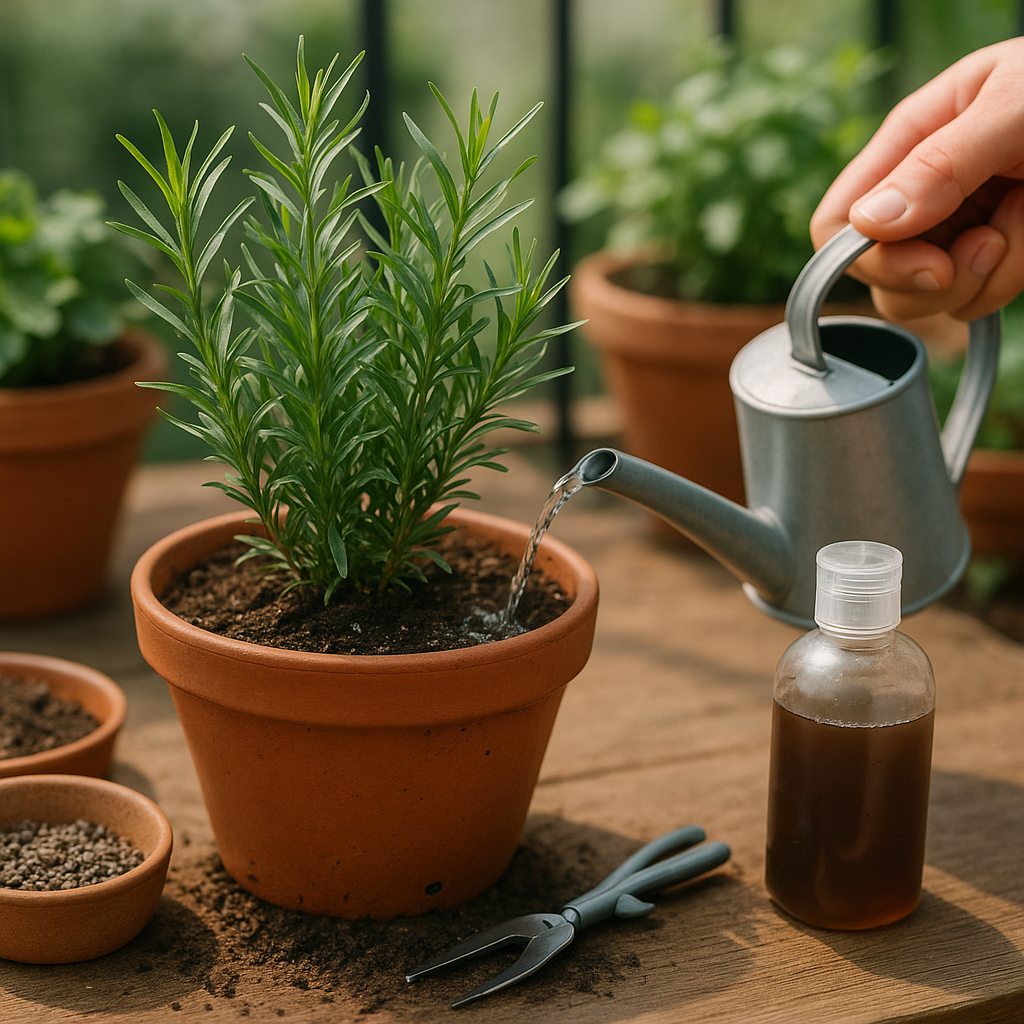Introduction
If you love homegrown herbs, fertilizing tarragon is a crucial step to getting the most flavorful leaves for your kitchen. Tarragon, prized in French cuisine for its subtle licorice notes, thrives on good soil, consistent moisture, and just the right nutrients. But even healthy-looking plants can fall short if their nutrient needs aren’t met—leading to weaker growth and less intense flavor. Fertilizing isn’t just about making tarragon grow bigger; it’s the secret ingredient to that vibrant taste chefs crave.
In this guide, we’ll walk you through when and how to fertilize tarragon, which types of fertilizer work best, and practical tips for organic or container gardens. Whether you’ve got a patch in your backyard or a pot on the balcony, these simple steps will help ensure your tarragon is both robust and delicious, ready to be the star of your next dish.
Understanding Tarragon’s Nutrient Needs

Tarragon thrives best in well-draining, light soils that are moderately fertile, preferably with slightly sandy or loamy textures to prevent waterlogging. It’s important to avoid heavy clay soils, as they retain too much moisture and can cause root rot.
When it comes to fertility, tarragon doesn’t require highly enriched soils—too much nutrition, especially nitrogen, can actually diminish the plant’s signature flavor and lead to lanky, leggy growth. French tarragon, prized for its delicate and aromatic taste, is particularly sensitive to over-fertilization and benefits from minimal feeding: a light application of compost in early spring is sufficient.
Russian tarragon, on the other hand, is more robust and hardy, tolerating slightly richer soils but still not needing frequent fertilizer. In both cases, avoid high-nitrogen fertilizers; excessive nitrogen (the “N” in NPK ratios) encourages leafy growth at the expense of flavor and essential oils.
Instead, opt for a balanced fertilizer with an NPK ratio like 5-5-5 or use organic compost, which slowly releases nutrients. Remember, with tarragon and most culinary herbs, less is often more when it comes to fertilization—healthy, flavorful plants thrive on restraint, not excess.
Choosing the Best Fertilizer for Tarragon
When fertilizing tarragon, the choice between organic and synthetic fertilizers can significantly impact both flavor and plant health. Organic options like compost and liquid seaweed provide gentle, slow-releasing nutrients that help tarragon grow steadily without overwhelming its delicate root system. These natural fertilizers also improve soil structure and encourage beneficial microbes, making them ideal for kitchen gardens where soil health matters.
In contrast, synthetic fertilizers offer quick nutrient boosts but can risk burning the roots and altering the subtle flavor of tarragon if not used carefully. For best results, choose a mild, balanced fertilizer with an NPK (Nitrogen-Phosphorus-Potassium) ratio around 5-5-5 or 4-4-4. This ensures your tarragon gets essential nutrients without encouraging excessive leafy growth that can dilute flavor.
Slow-release organic pellets, like Espoma Garden-Tone, are safe and easy to use for edible herbs, delivering nutrients over time without chemical residues. Homemade compost tea or diluted fish emulsion are great DIY options that add trace minerals and feed the soil gently—just be careful not to over-apply, as too much fertilizer can make tarragon leggy or reduce its aromatic oils.
Always prioritize fertilizers labeled safe for edibles, and stick to light feeding to keep your tarragon robust and tasty.
How and When to Fertilize Tarragon

Fertilizing tarragon is all about balance—too much fertilizer can dull the herb’s delicate flavor, while too little may slow its growth. The best approach is to apply a light, balanced fertilizer in early spring, just as new shoots begin to emerge.
For in-ground tarragon, a slow-release granular fertilizer gently scratched into the soil surface works well. Repeat the application halfway through the growing season, but avoid over-fertilizing, as this can result in lush yet flavorless leaves.
For container-grown tarragon, use a diluted liquid fertilizer at half strength every 4–6 weeks. Make sure the soil drains freely to prevent root burn.
Keep an eye out for pale, yellowing leaves or slow growth—these are signs your tarragon may need a nutritional boost. However, if the plant looks vibrant and is growing steadily, hold off on feeding, especially during midsummer when hot weather can make tarragon sensitive to excess nutrients.
Instead, focus on keeping the soil evenly moist and well-drained. Always water before and after fertilizing to prevent root burn. Remember, less is more—healthy tarragon thrives on minimal feeding and good care, so resist the urge to overdo it.
Common Fertilization Mistakes to Avoid
One of the most common fertilization mistakes is over-fertilizing, which can cause visible symptoms like yellow or brown leaf edges (leaf burn), weak or leggy growth, and even off-flavored fruits and vegetables. Many gardeners accidentally use too much high-nitrogen fertilizer, which encourages lots of leafy growth but fewer flowers or fruits, leaving vegetables watery and tasteless.
Fertilizing at the wrong time—such as right before heavy rain or during a plant’s dormant period—can waste product and harm your plants or the environment. If you notice signs of over-fertilization, flush the soil with plenty of water to help wash away excess nutrients, and hold off on any feeding until your plants recover.
Always read package directions carefully, use the recommended amount, and time applications for when plants are actively growing. Keeping a simple feeding schedule and using slow-release fertilizers can help prevent these mistakes altogether.
Troubleshooting and Special Tips for Healthy Tarragon
If your tarragon shows yellowing leaves or stunted growth, it may be suffering from a nutrient deficiency—most often a lack of nitrogen or iron. To pinpoint the issue, perform a simple soil test, which you can find at local garden centers or online. This helps you identify what your soil may be missing.
For an easy fix, amend your soil with organic compost or a balanced organic fertilizer, both of which feed your tarragon gently without harsh chemicals. Mulching around the base also helps retain moisture and gradually enriches the soil as it breaks down.
If you’re growing tarragon in containers or indoors, make sure to use a pot with good drainage and high-quality potting mix. Water when the top inch feels dry to prevent root rot. Place your indoor tarragon in a sunny window or supplement with a grow light, especially during winter.
To keep your tarragon thriving sustainably, use natural fertilizers like worm castings or diluted fish emulsion, and avoid synthetic additives. Pairing tarragon with companion plants like tomatoes or basil can also create a mini-ecosystem that deters pests and promotes healthy growth, making your herb garden more resilient and eco-friendly overall.
Conclusion
Proper tarragon fertilization starts with well-draining soil, modest organic compost, and careful use of balanced fertilizer once or twice during the growing season. Remember that tarragon prefers a light touch—overfeeding can lead to weak flavor and lush, floppy growth.
Don’t hesitate to experiment within these safe guidelines, adjusting your approach based on local conditions and your plant’s responses. Every garden is unique, and discovering what works best is part of the fun.
If you have questions about fertilizing tarragon or want to share your own experiences, please leave a comment below—I’d love to hear from you!
